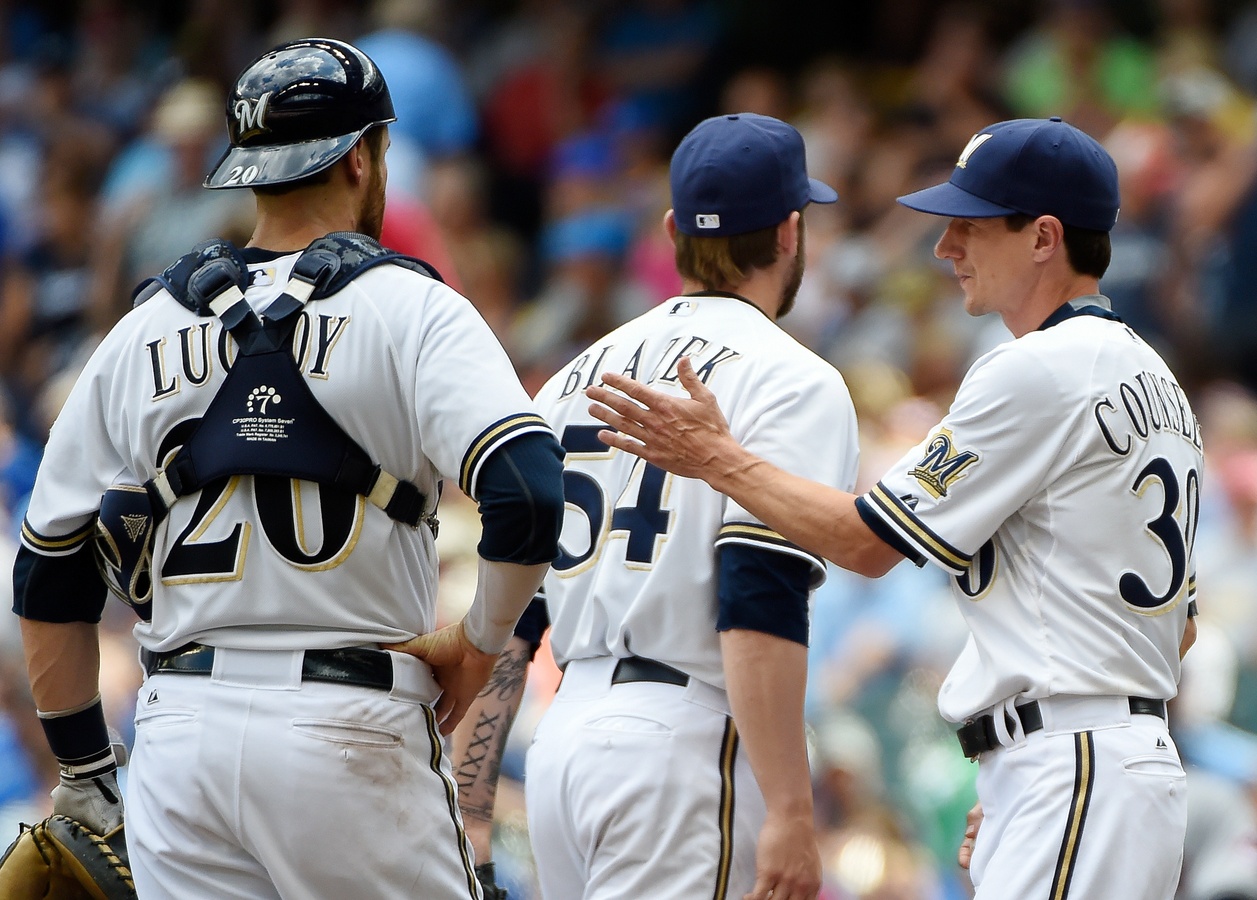Relief pitching has fascinated BP Milwaukee for quite some time. Back in July, Michael Bradburn mused on the Brewers bullpen’s success in spite of the team’s failure. In August, J.P. Breen highlighted the importance of a bullpen to a contending team. In November, Seth Victor summarized the club’s relief options and wondered what path they would take in 2016. In December, Julien Assouline dissected the various ways in which sabermetricians can analyze a bullpen, noting the advantages and drawbacks of each. And last week, I examined the historical rarity of teams with spectacular relievers and horrible starters, such as the 2015 Brewers.
One can clearly see the reason why we’ve focused on this area: Milwaukee didn’t accomplish anything in terms of hitting, fielding, or starting pitching last season. Only the club’s relief pitching garnered positive recognition, and correctly so. With the fourth-lowest DRA in baseball, the bullpen alone prevented the Brewers from compiling 100 defeats (although it couldn’t help them avoid the 90-loss threshold).
Of course, what matters here is how well the bullpen will perform in the future. What chance does it have of a repeat performance? If the position players and rotation improve, will the relievers continue their elite play and make the club great? As we’ll see, the history of similar squads makes for a murky forecast.
The majors expanded to 30 teams in 1998, with the addition of the Rays and Diamondbacks. Since then, there have been 17 pairs of consecutive seasons (year n and year n+1), which we’ll make our sample. Of the 85 teams who placed in the top five for relief DRA in the first campaign, 19 made it back in the second. On average, those squads finished 12th in the following year — a much more mediocre level. By contrast, 40 of the 85 top-five clubs in starting DRA sustained their rank in season n+1, placing an average of ninth.
If we expand our threshold to the top ten bullpens in baseball, we see the same trend, albeit to a lesser extent. We notice that 77 of the bullpens in the top third of the league one year repeated the next year, while ranking 12th overall on average. A total of 88 of the best rotations, meanwhile, made it to the top ten in year n+1; they placed 11th on average. In simpler terms, great starting pitching tends to stick around, whereas superb relief pitching can come and go.
Could this fate befall the Brewers? Looking at their roster, we can certainly imagine it coming to pass. Francisco Rodriguez, who earned a 2.24 DRA in 2015, will pitch for the Tigers in 2016. Prior to last year, Michael Blazek owned a 6.12 DRA in 17.1 frames, casting some doubt on the 2.46 mark he posted in his full-season Milwaukee debut. The same applies to Will Smith and his pre-2015 DRA of 5.06. Beyond them, the relief options range from passable (Jeremy Jeffress, Corey Knebel) to shaky (Tyler Thornburg, David Goforth). If Blazek and Smith fall off their pace and Yhonathan Barrios doesn’t take the next step, the late innings could get ugly for the Brewers.
This shouldn’t detract from Milwaukee’s relief performance in 2015, nor should it cast unnecessary doubt on the bullpen’s 2016 prospects. Virtually every club has these potential holes in their pitching staff. Rather, this should serve as a reminder of the volatility of relief pitching, even on a team level. A decline to some degree is likely in 2016. As J.P. argued, building around a strong bullpen can pay off, but perhaps a formidable rotation would make for a wiser — and longer-lasting — investment.
